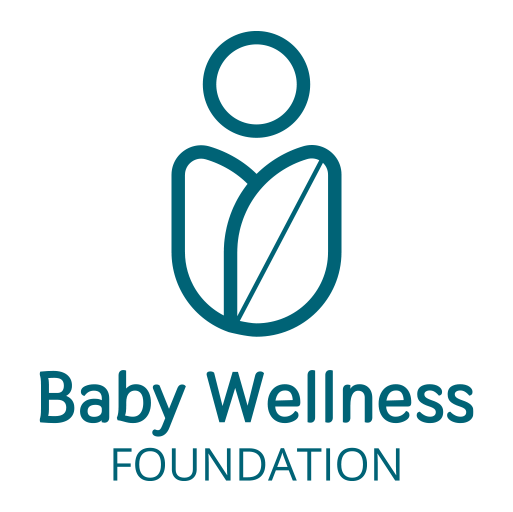Articoli tecnici per professionisti
Esegui il login oppure registrati!
Aarnivala, H., Vuollo, V., Harila, V., Heikkinen, T., Pirttiniemi, P., & Valkama, A. M. (2015). Preventing deformational plagiocephaly through parent guidance: A randomized, controlled trial. European Journal of Pediatrics, 174(9), 1197–1208.
Baker, T., Haines, S., Yost, J., DiClaudio, S., Braun, C., & Holt, S. (2012). The role of family-centered therapy when used with physical or occupational therapy in children with congenital or acquired disorders. Physical Therapy Reviews, 17(1), 29–36.
Bridges, S. J., Chambers, T. L., & Pople, I. K. (2002). Plagiocephaly and head binding. Archives of Disease in Childhood, 86(3), 144–145.
Cavalier, A., Picot, M.-C., Artiaga, C., Mazurier, E., Amilhau, M.-O., Froye, E., Captier, G., & Picaud, J.-C. (2011). Prevention of deformational plagiocephaly in neonates. Early Human Development, 87(8), 537–543.
Chiari, P. (2006). l’infermieristica basata su prove di efficacia. Guida operativa per l’Evidence Based Nursing. McGraw-Hill.
Collett, B. R., Leroux, B. G., Wallace, E. R., Gallagher, E., Shao, J., & Speltz, M. L. (2018). Head shape at age 36 months among children with and without a history of positional skull deformation. Journal of Neurosurgery: Pediatrics, 21(3), 204–213.
Container Baby Syndrome: How Equipment Can Hinder a Child’s Development. (s.d.). Recuperato 29 gennaio 2021
Di Chiara, A., La Rosa, E., Ramieri, V., Vellone, V., & Cascone, P. (2019). Treatment of Deformational Plagiocephaly With Physiotherapy. The Journal of Craniofacial Surgery, 30(7), 2008–2013. https://doi.org/10.1097/SCS.0000000000005665
Flannery, A. B. K., Looman, W. S., & Kemper, K. (2012). Evidence-Based Care of the Child With Deformational Plagiocephaly, Part II: Management. Journal of Pediatric Health Care, 26(5), 320–331. https://doi.org/10.1016/j.pedhc.2011.10.002
Gynécologie suisse. (2014). Come mettere al mondo vostro figlio, opuscolo informativo sul parto. https://www.sggg.ch/fileadmin/user_upload/Dokumente/3_Fachinformationen/4_Patienteninformationsblaetter/
Kaplan, S. L., Coulter, C., & Sargent, B. (2018). Physical Therapy Management of Congenital Muscular Torticollis: A 2018 Evidence-Based Clinical Practice Guideline From the APTA Academy of Pediatric Physical Therapy. Pediatric Physical Therapy: The Official Publication of the Section on Pediatrics of the American Physical Therapy Association, 30(4), 240–290.
Laughlin, J., Luerssen, T. G., Dias, M. S., & Committee on Practice and Ambulatory Medicine, Section on Neurological Surgery. (2011). Prevention and management of positional skull deformities in infants. Pediatrics, 128(6), 1236–1241. https://doi.org/10.1542/peds.2011-2220
Lennartsson, F. (2011). Testing guidelines for child health care nurses to prevent nonsynostotic plagiocephaly: A Swedish pilot study. Journal of Pediatric Nursing, 26(6), 541–551.
Lennartsson, F., & Nordin, P. (2019). Nonsynostotic plagiocephaly: A child health care intervention in Skaraborg, Sweden. BMC Pediatrics, 19(1), 48. https://doi.org/10.1186/s12887-019-1405-y
Lennartsson, F., Nordin, P., & Ahlberg, B. M. (2017). Integrating new knowledge into practice: An evaluation study on a continuing education for Swedish child health nurses on non-synostotic plagiocephaly. Nursing Open, 5(3), 329–340.
Lennartsson, F., Nordin, P., & Wennergren, G. (2015). Teaching Parents How to Prevent Acquired Cranial Asymmetry in Infants. Journal of Pediatric Nursing, 31(4), e252-261.
Leung, A., Mandrusiak, A., Watter, P., Gavranich, J., & Johnston, L. M. (2017). Impact of Parent Practices of Infant Positioning on Head Orientation Profile and Development of Positional Plagiocephaly in Healthy Term Infants. Physical & Occupational Therapy in Pediatrics, 38(1), 1–14.
Martínez-Lage, J. F., Arráez Manrique, C., Ruiz-Espejo, A. M., López-Guerrero, A. L., Almagro, M. J., & Galarza, M. (2012). Deformaciones craneales posicionales: Estudio clínico-epidemiológico. Anales de Pediatría, 77(3), 176–183.
Meraviglia, M. V., & Villani, D. (2014). Positional Plagiocephaly. Springer International Publishing.
Meraviglia, M. V., Villani, D., & Brunati, E. (2011). The Flying Publisher Guide to la Plagiocefalia posizionale. Bernd Kamps Steinhäuser Verlag.
Pelligra, R., Doman, G., & Leisman, G. (2005). A reassessment of the SIDS Back to Sleep Campaign. TheScientificWorldJournal, 5, 550–557. https://doi.org/10.1100/tsw.2005.71
Platzer, W. (2014). Atlante tascabile di anatomia umana vol.1 (5a ed.). Casa Editrice Ambrosiana.
Robinson, S., & Proctor, M. (2009). Diagnosis and management of deformational plagiocephaly. Journal of Neurosurgery. Pediatrics, 3(4), 284–295. https://doi.org/10.3171/2009.1.PEDS08330
Russo, R. C. (2003). Evoluzione e disturbi del movimento. Casa Editrice Ambrosiana.
Sarti, P., & Sparnacci, G. (2003). Gravidanza e puericultura. Guida completa dal concepimento ai sei anni. Giunti.
Sironi, C. (2010). In traduzione alla ricerca infermieristica. I fondamenti teorici e gli elementi di base per comprenderla nella realtà italiana. Casa Editrice Ambrosiana.
Swiss Paediatrics. (2011). Curve della crescita. www.swiss-paediatrics.org
van Vlimmeren, L. A., Takken, T., van Adrichem, L. N. A., van der Graaf, Y., Helders, P. J. M., & Engelbert, R. H. H. (2006). Plagiocephalometry: A non-invasive method to quantify asymmetry of the skull; a reliability study. European Journal of Pediatrics, 165(3), 149–157. https://doi.org/10.1007/s00431-005-0011-1
Approfondimento scritto da:

